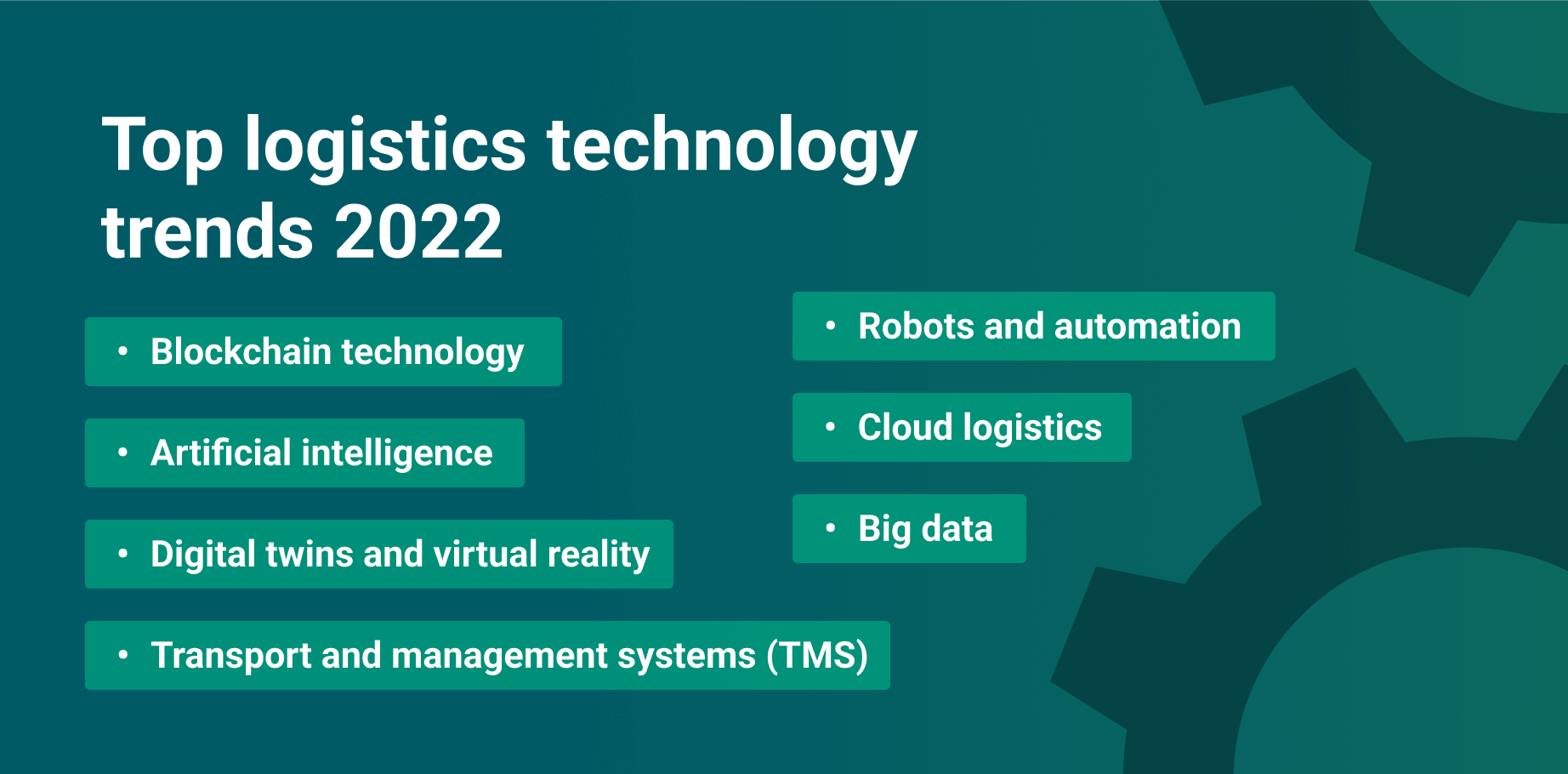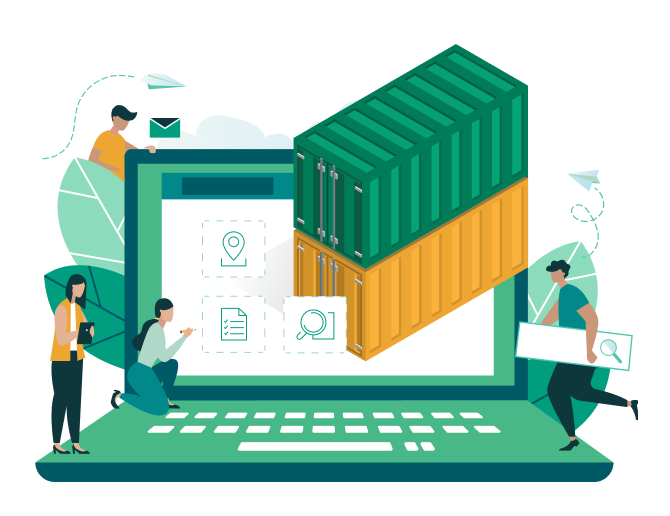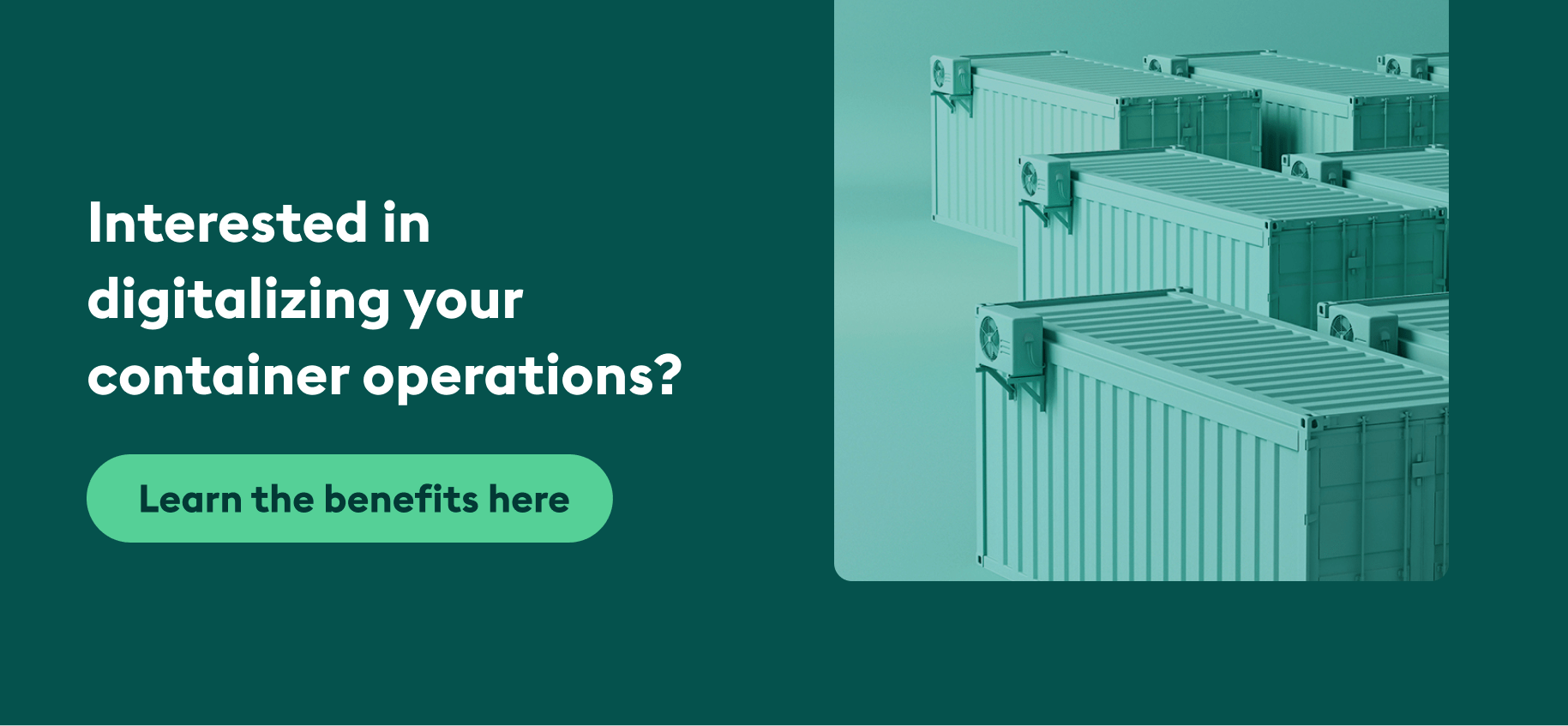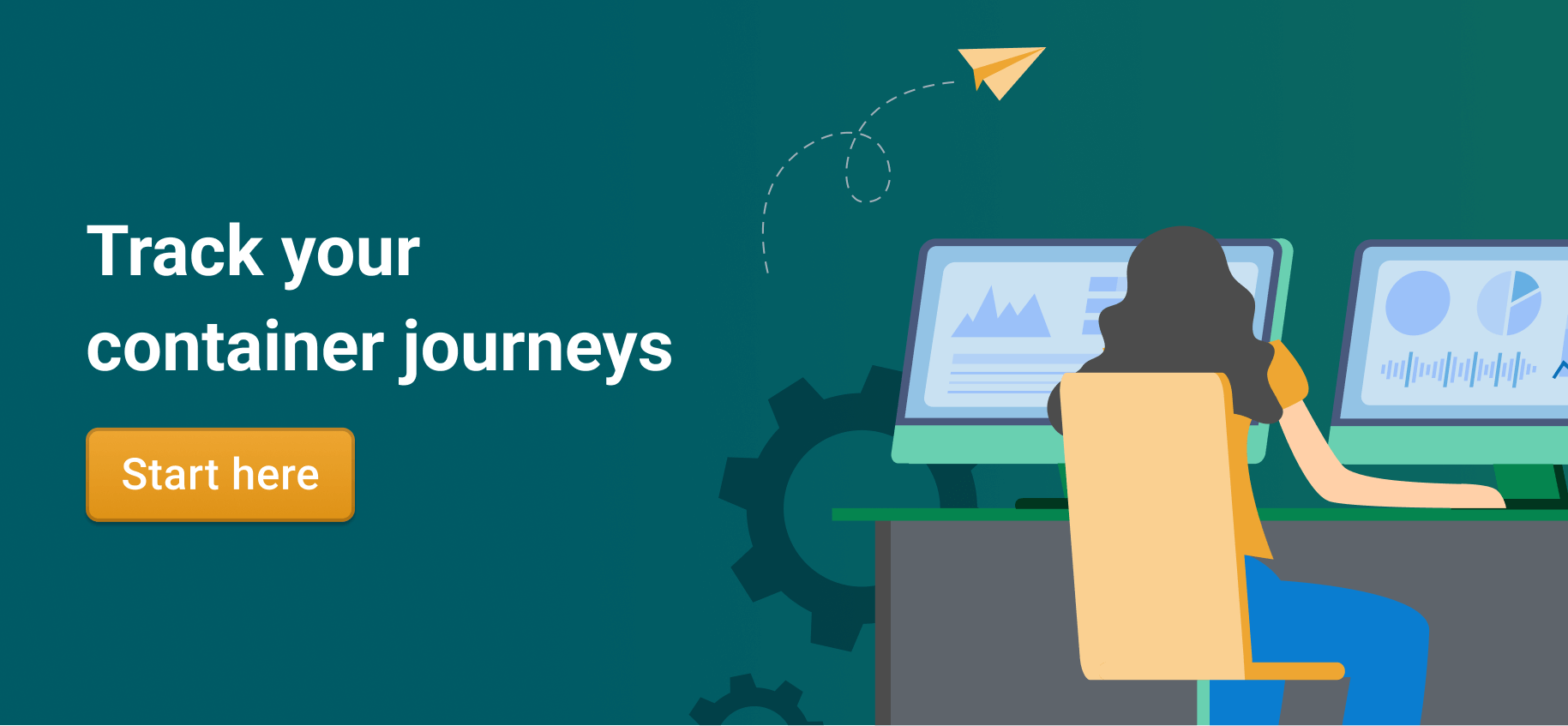Last Updated: October 16, 2023
Modern technology is reshaping the logistics industry and solving some of the most complex issues in the shipping world. In this blog, learn about the top trends in logistics technology. Also, discover must-have tech solutions to solve all of your shipping woes.
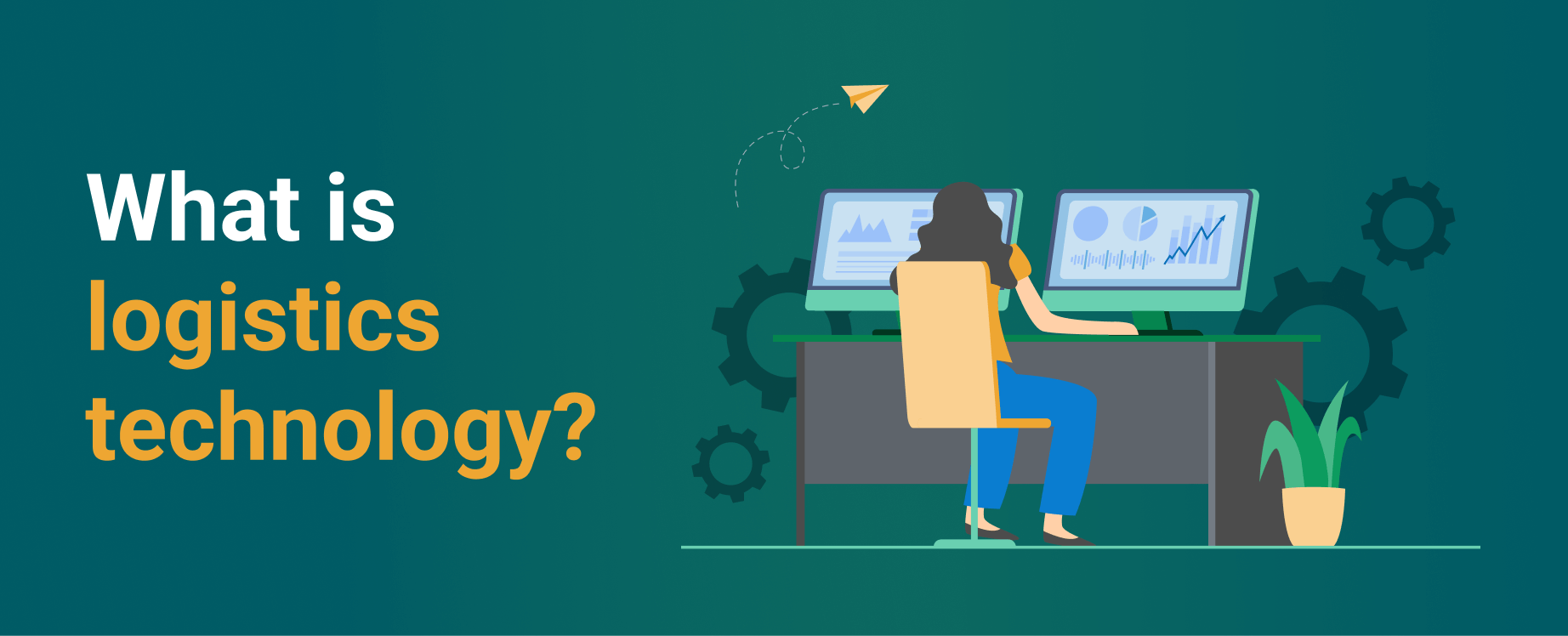
As an industry player, it’s important to stay on top of the latest technological advancements, and find logistics technology that helps you run your business as smoothly as possible. You need that competitive advantage to stay ahead of the curve. Because the pace just keeps on quickening.
Did you know that around 60% of freight forwarders, NVOCCs and traders struggle to keep track of boxes from pick up to drop off? And 43% of them feel they lack overall container visibility? This leads to unexpected delays, communication breakdowns, and unhappy customers. The last things you want.
If this is you, our Container Control feature is what you’ve been looking for. Monitor your containers in real-time, get notified about delays or issues, manage bookings and add references, all in one place.
Ready to check out Container Control to see what it’s all about? Click below to get a free custom demo with one of our friendly experts.
What is the meaning of logistics technology?
Let’s start with the basics. Logistics technology is any technology that allows players in the logistics industry to manage the flow of goods. From manufacturing and production, all the way to the end consumer, as quickly and efficiently as possible. It involves both machinery and vehicles, and computing software.
Due to the highly complex nature of the industry, technology is constantly being optimized to meet the growing demand for goods to be moved around the world. Current challenges include faster delivery times, shipping to more remote locations, access to containers and vessel slots at short notice, and transporting larger and more complex cargo.
Good logistics technology is essential for company success and customer satisfaction in this highly competitive industry. If you don’t invest in technology that streamlines your business and allows you to solve difficult problems in short time frames, you’re going to fall by the wayside.
So how can logistics technology transform the way the shipping industry works? Let’s find out in the next section.
How logistics technologies are transforming the shipping industry
The shipping industry hasn’t changed much in the last 50 years. Many processes are not yet automated, and software is old and outdated. Many shipping companies still use paper documents. And even invoices, checks, and bank transfers are handled manually.
According to a recent study, companies will spend $2.3 trillion on technologies and services that enable digitization by 2023. This figure speaks volumes about the value of digitization in our modern world. Let’s take a look at some of the benefits below:
Streamlining data flows: Digital logistics technology allows businesses to streamline their data flow and house it centrally rather than in separate silos.
Interoperability: Going hand-in-hand with the digitization of data is interoperability. This is the active exchange of data between parties in the industry. It allows for greater transparency, something that’s been lacking in the shipping world for a long time.
Fostering trust and reliability: Technologies like blockchain are secure, and cannot be tampered with. This allows business partners to share information without fear of fraud, fostering trust and improving relationships.
Paperless document handling: With digital logistics technology, you can now generate and store shipping documentsWhat are shipping documents? In shipping, shipping documents are documents that provide information about the goods being shipped. They may include information such as the origin and destination of th... More online. This means you can access them anytime, from anywhere.
Top logistics technology trends in 2023
From automation to cloud software and AI, there’s a lot going on in the logistics industry right now. Let’s take a look at some of the most promising technologies in 2023.
Blockchain technology
‘Blockchain’ is a term that leaves many people scratching their heads. And they’re right, it’s complicated.
In basic terms, a blockchain is a public, digital ledger that tracks transactions and the movement of assets in real-time. Each transaction is a single ‘block’ in the overall ‘chain’ which makes up the blockchain.
Here are some benefits of blockchain shipping technology:
Shipment tracking: Traditional tracking methods are slow, unreliable and localized. With blockchain, data is accessed from anywhere, anytime. So, you can track shipments real-time.
Smart bills of lading: Keep documents such as the bill of lading safe by storing them digitally. This saves both time and money. It also prevents important documents from getting lost.
Smart contracts: Smart contracts are blockchain-based machines programmed with rules. These rules make up a legal contract. If rules are broken, consequences are automatically executed.
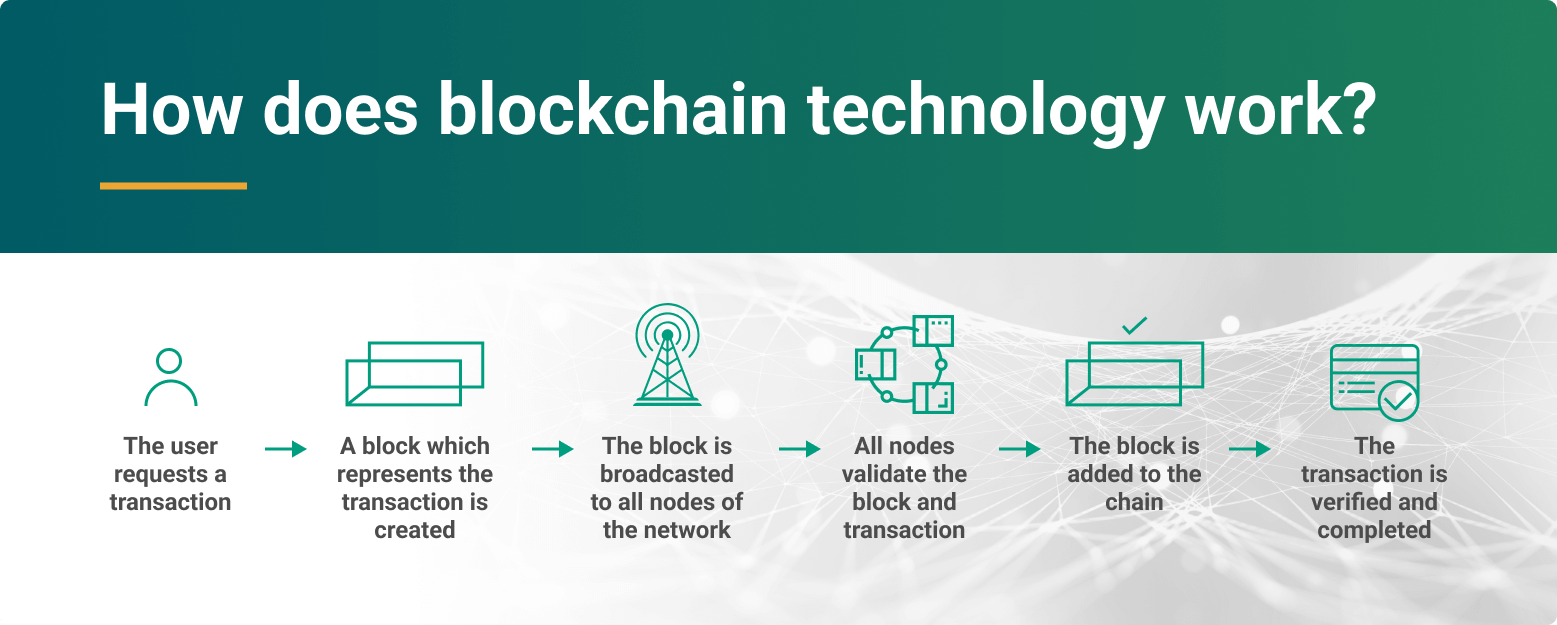
Actionable AI
Artificial intelligence (AI) has taken the world by storm in 2023, and don’t worry, we’re not worried about robots taking over the world. Some of you may have already incorporated AI into your daily lives whether it be for school, work or just for inspiration. Well, when it comes to technology in logistics, actionable AI can come in handy.
What does this entail? Well, Actionable AI allows for better data-driven decisions by mimicking problem-solving techniques that we apply. AI is able to learn patterns based off of past decisions and adapts to real world circumstances. Using this method can help streamline logistics operations by analyzing historical and real-time data, reducing transportation costs and enhancing delivery times. Predictive analytics enables proactive decision-making by forecasting demand and supply patterns, aiding in the anticipation of potential disruptions.
AI’s role extends to optimizing inventory management, automating warehouse processes with robotics, and providing real-time tracking for enhanced supply chain visibility. The technology further excels in demand forecasting, identifying risks, and utilizing chatbots for customer service, contributing to improved overall efficiency.
Digital twins and virtual reality
The term ‘digital twins’ sounds bizarre, but what it boils down to is a virtual simulation of a physical device, system, or process.
These simulations are run virtually in the digital sphere before the actual devices are built or processes are created.
Virtual reality (VR) is used by managers to test planned procedures, before going ahead with a project. This can drastically mitigate risk – plus, just think of the cost savings!
Transportation management system (TMS)
A transportation management system (TMS) is a logistics platform that helps businesses plan and optimize the movement of goods. This platform is often part of a larger Supply Chain Management (SCM) system.
TMS is growing in popularity, and is currently used to manage carriers and optimize routes. They’re also useful to track shipments in real-time, make payments more secure, produce and house documentation, and streamline the overall shipping process end-to-end.
Robots and automation
Currently, around four-fifths of the world’s warehouses are operated manually. That leaves a lot of room for improvement.
Robots are used for maintenance, organizational, and dangerous tasks, reducing risk and leaving workers time to focus on other aspects of their jobs. This is also useful during labor shortages and can be used to cut costs. Robots often take care of activities like packing, sorting and categorizing goods, as well as short delivery trips.
Currently, some ports have self-driving vehicles that move containers onto gantry cranes for loading onto ships. This is only the beginning of automation in the shipping industry.
Big data
‘Big data’ is a buzzword we hear about often. So what exactly is it? Big data is the collection of large amounts of data in order to find trends, make forecasts, and reduce costs for the future.
It’s used to predict hazards, and provide insights into how to improve processes. Big data also helps players in the industry to see which areas can be further monetized.
Cloud logistics
A recent study by Logistik Heute revealed that around 70% of companies say they will use cloud logistics in the near future.
In a complex industry like shipping, with so many moving parts and individual players, cloud computing can come in handy. This logistics technology allows data to be stored in decentralized databases, which can be accessed from anywhere, at any time.
Now that you know all about the latest trends, let’s take a look at how Container xChange’s logistics solutions can help you streamline your container operations.
How to simplify your logistics with Container xChange
The technological advances being adopted in shipping are both fascinating and exciting. Talking about exciting, it’s time to find out all about what we offer at Container xChange. We’re a neutral and transparent platform offering end-to-end solutions for your container logistics business. See our wide range of offerings below:
Container trading
Looking to buy quality boxes? Our trading platform is so easy to use. On the trading public search, simply type in the container type you’re after, plus your location to browse deals and start negotiating directly with sellers.
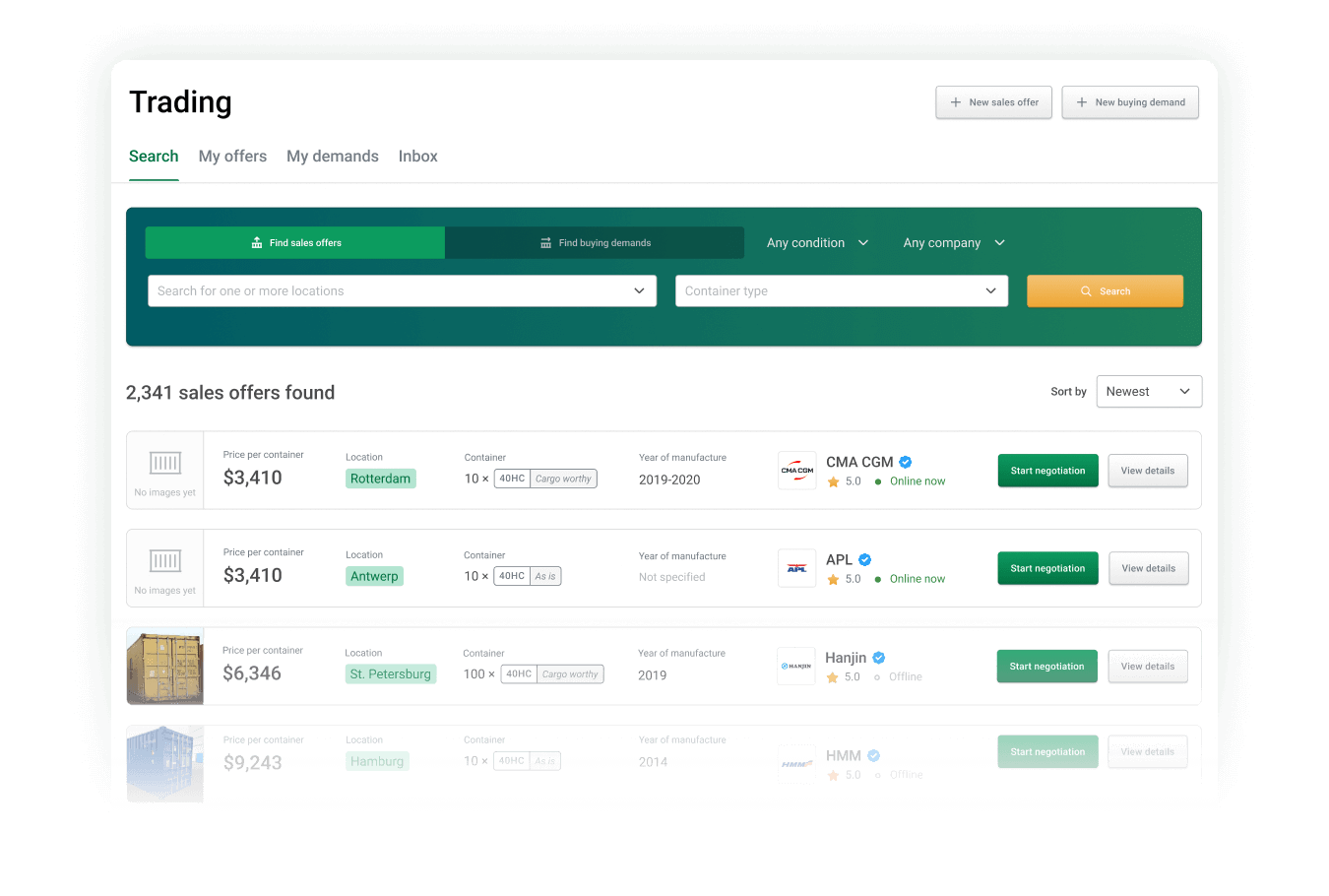
We’ve got over 10,000+ quality boxes available in over 2,500 locations around the globe. Choose from a wide variety of container types and sizes, to find the boxes that fit your unique requirements.
Insights
Want to keep up-to-date with the latest container prices? Our Insights platform is the tool you’ve been waiting for.
Get a global view of prices for standard dry containers, high cubes and reefers. Pinpoint the cheapest and most expensive areas to buy boxes and analyze trends to identify the perfect time to buy and sell.
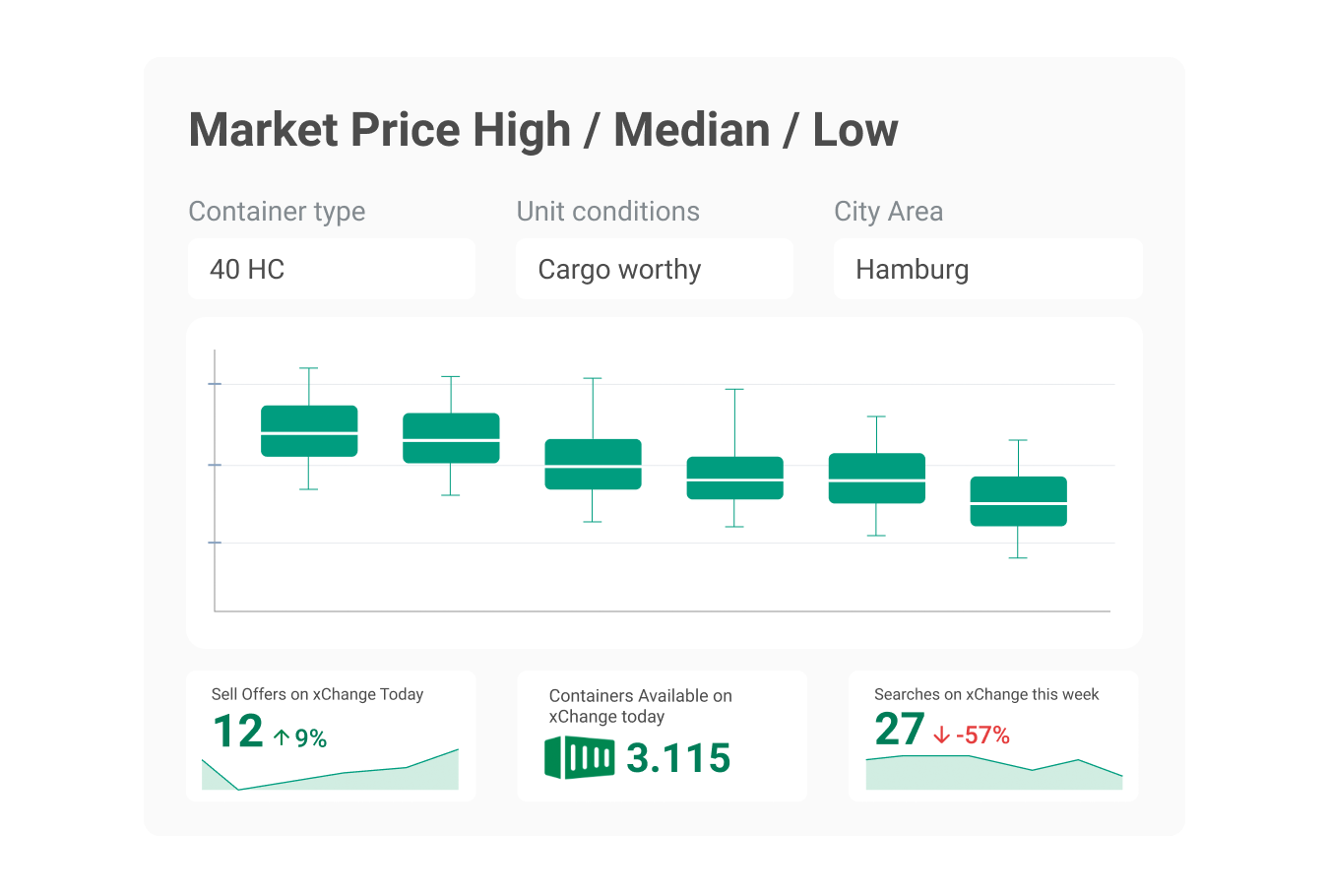
Interested in seeing the platform in action? Try Insights for free today.
Container leasing
If you want to lease SOCs for one-way moves, or avoid repositioning empty boxes, our leasing platform is what you’re looking for.
Once you’re a member, use our leasing public search to find the perfect SOCs for your needs in no time at all. Simply type in the container type you want, and the pick up location, to see 100s of deals that meet your criteria.
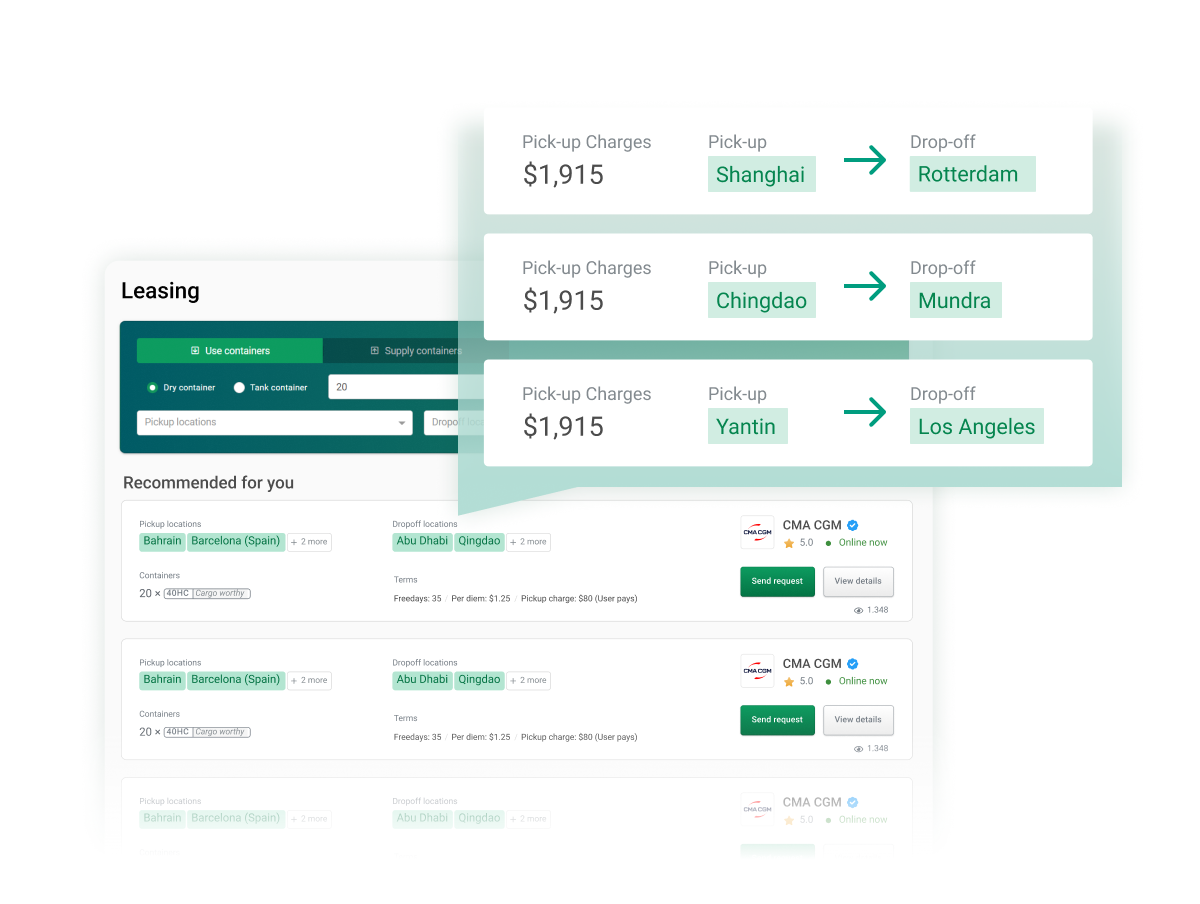 Manage all deals in one place, plus negotiate free days, per diem charges and pick up credits directly with partners using the live chat feature.
Manage all deals in one place, plus negotiate free days, per diem charges and pick up credits directly with partners using the live chat feature.
Once you’re a member, you’ll have instant access to 1,500+ leasing companies, all on one convenient platform.
Ocean Freight Marketplace
Comparing prices for SOC vessel slots, and accessing shipping schedules can be tricky. This is often due to lack of transparency in the industry. Our Ocean Freight Marketplace is your one-stop solution.
Once you’ve secured your quality SOCs on Container xChange, it’s time to head over to our Ocean Freight Marketplace to find those vessel slots. It’s easy to compare prices for multiple slots at once, to make sure you get the best deals possible.
On this platform, get slot quotes and price breakdowns. Plus access shipping schedules, so that you can make decisions quickly and efficiently.
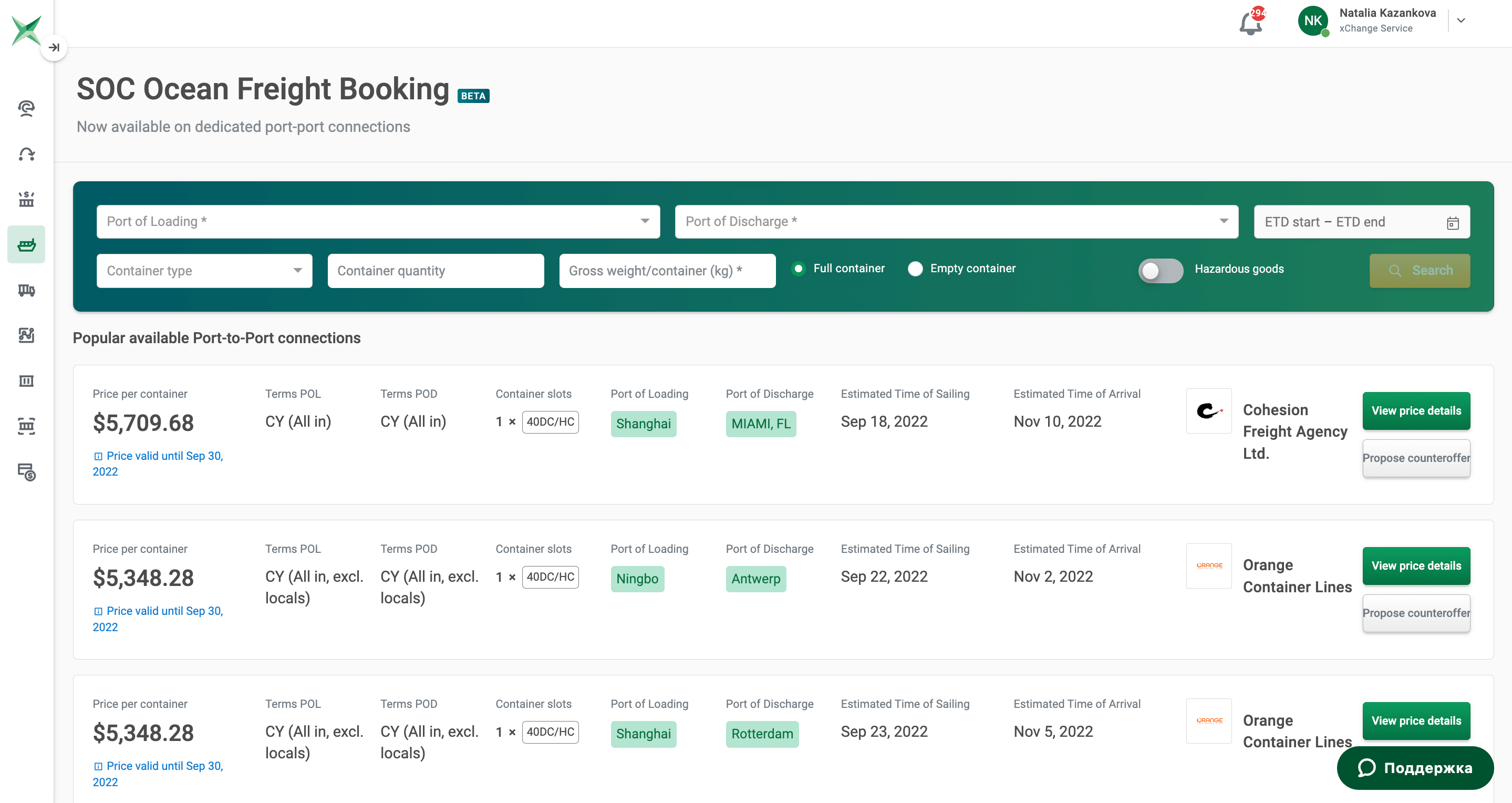
Click here to learn more about our Ocean Freight Marketplace, by talking to one of our experts.
Financial services
We offer a 100% secure payment system with the xChange wallet. Make payments while you’re on the platform, and keep track of all transactions in one convenient place. All payments are managed by us, so you don’t have to run after your partners anymore! Access your payment history on demand, and receive just one monthly invoice. It’s so simple!
Have an issue or query? Our dedicated customer service team is always available to ensure a smooth transaction process, and make sure each and every payment you make is safe. Talk to our friendly and helpful team to find out more.
Container Control
With Container Control, you can finally manage your container operations and movements in one place.
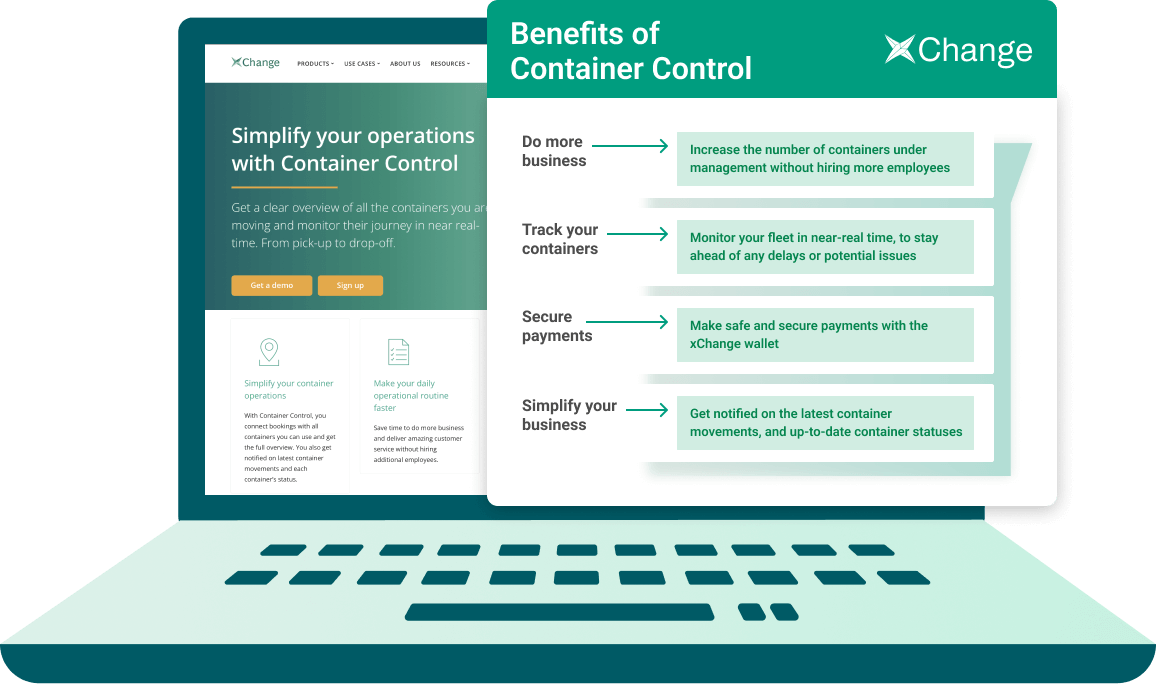
Near-real time tracking: Keep track of all container movements, plus receive regular updates directly from depots. Get ETAsWhat is estimated time of arrival? Estimated time of arrival, commonly known as ETA, is a frequently used term globally to denote the time of coming. In the shipping & logistics industry, it is ... More and stay ahead of any delays or potential issues.
Manage references: Add references to keep track of your containers in one single dashboard. Add suppliers quickly and easily, even if they’re not members on the Container xChange platform, to keep everything in one place.
Safe and secure payments: Select and pay for containers right on the platform, using the xChange wallet. Keep track of your payment history and receive just one monthly invoice.
Manage everything in one place: Finally, say goodbye to switching between multiple accounts and platforms to manage your day-to-day operations. Lease containers, negotiate deals, track boxes from pick up to drop off, and keep up-to-date with industry trends. All on one single platform.
Collect client container bookings: Keep records of all container bookings with shippers and partners. Connect bookings to container release orders (references) and monitor container and booking updates.
Can’t wait to find out more about Container Control? We’d love to show you around. Click below to set up your custom demo with one of our friendly experts, to start your journey with us today.
What technologies are used in the logistics industry?
There are various technologies used in the logistics industry, including blockchain, IoT (Internet of Things), digital twins, big data, transport and management systems (TMS) and AI, among others.
What are the different types of logistics?
There are four main types of logistics: Supply, distribution, sales and reverse logistics.
What is logistics technology?
Logistics technology is any technology used to streamline the supply chain process, from initial production, all the way to delivery to the end consumer.
What are the latest trends in logistics technology?
The latest trends in logistics technology include using artificial intelligence, blockchain technology, self-driving vehicles, machine learning, big data, and automation.
![Logistics technology: Top digital trends + why they matter [2022]](https://www.container-xchange.com/wp-content/uploads/2022/10/Con-Control-benefits.png)


